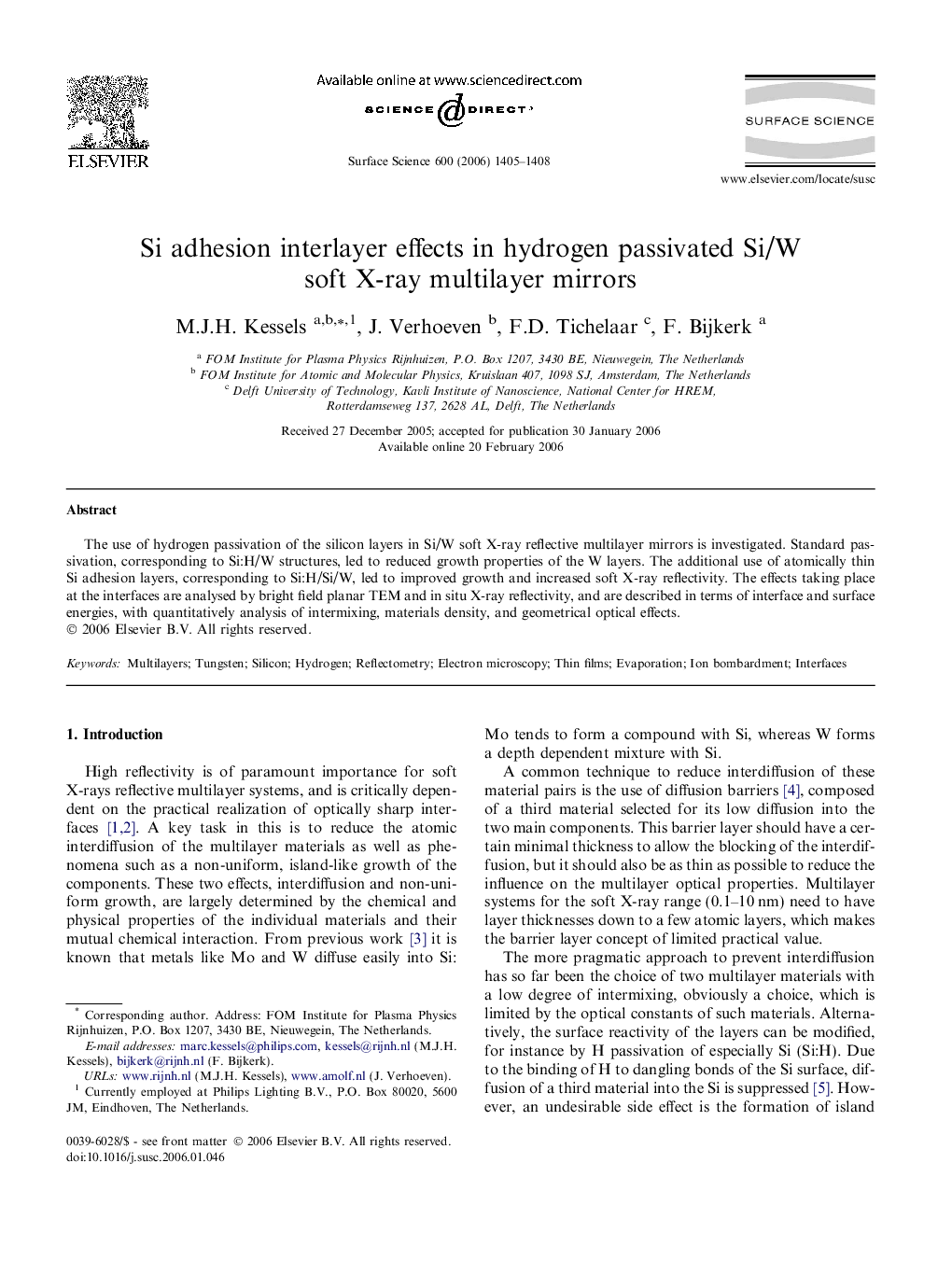| Article ID | Journal | Published Year | Pages | File Type |
|---|---|---|---|---|
| 5426805 | Surface Science | 2006 | 4 Pages |
Abstract
The use of hydrogen passivation of the silicon layers in Si/W soft X-ray reflective multilayer mirrors is investigated. Standard passivation, corresponding to Si:H/W structures, led to reduced growth properties of the W layers. The additional use of atomically thin Si adhesion layers, corresponding to Si:H/Si/W, led to improved growth and increased soft X-ray reflectivity. The effects taking place at the interfaces are analysed by bright field planar TEM and in situ X-ray reflectivity, and are described in terms of interface and surface energies, with quantitatively analysis of intermixing, materials density, and geometrical optical effects.
Keywords
Related Topics
Physical Sciences and Engineering
Chemistry
Physical and Theoretical Chemistry
Authors
M.J.H. Kessels, J. Verhoeven, F.D. Tichelaar, F. Bijkerk,
